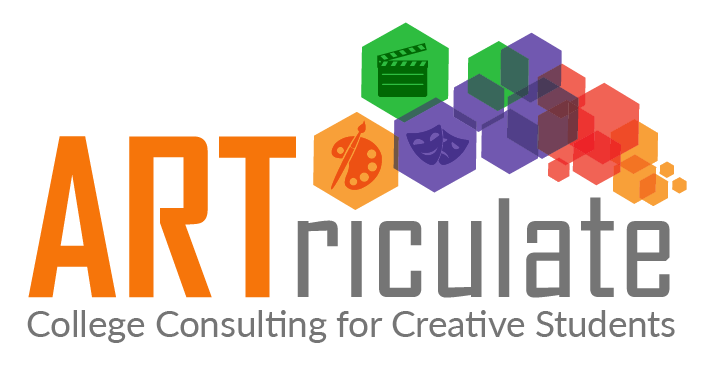Submitting a Great Visual Arts Portfolio
Applying to a visual arts BFA program almost always requires submitting a portfolio. This should be the best and most fun part of your college applications but for some students it causes undo stress and confusion. Here are some guidelines about the visual arts portfolio requirement.
What is the goal of submitting a portfolio (besides being accepted)? You want your work to tell your story, and highlight your style, growth as an artist, and experience with different mediums. It should effectively build a visual narrative that expands on other components of your application, including your essays, extra curricular activities, and letters of recommendation. Your portfolio is yet another way schools will get to know you, in some ways it is your “elevator speech” to schools, take it seriously.
Your main goal is to help the reviewer get a sense of who you are as an artist and how you stand out in a crowd of very talented students.
How do you create this supporting visual narrative? Some students start with sketchbook images (why we encourage all students to keep a sketchbook), then show more traditional pieces, observational figure drawing is a must have in most portfolios, portrait work, and then expand into larger, more impactful conceptual work. Keep in mind, that portfolios should support your preferred major. Architectural portfolios should include some built/constructed work as well as perspective drawings, animation portfolios should include character designs and gesture drawings, and industrial design portfolios should include 3D prototypes and development sketches.
Most students start by assembling a body of work of about 25 pieces which enables you to select the most appropriate works for each school based on their requirements, focus and prompts. Schools vary with their requirements but most ask you to submit between 10 and 20 pieces. For 3D pieces you can create "montage like" images from different angles to show multiple related pieces in one uploaded image. Don’t however put multiple pieces together in one image to "game the system" and submit more pieces than required. Be proud of the work you submit and photograph it in a professional manner using your phone and about $20 worth of equipment from your local hardware store. If you need guidance download our Guide to Photographing Your Art Work.
For most schools you will submit your work using Slideroom (once you indicate you are applying to a BFA program the school will send you a login) which allows you to submit work in either .png or .jpeg formats. Slideroom submissions often require you to enter the names, sizes and mediums, and descriptions of each piece. Use google docs to prepare this information as it will allow you to spell and grammar check your work before you submit. It is also much easier to copy, paste, modify descriptions as you submit to various schools if everything is in one place. You have 1,000 characters (not words) to write a description for most schools. The description should discuss why you created the piece, what was successful, and what mediums you used and why. Sequence your work to show a progression of skill, style and mediums used. Each school has their own requirements so be sure to verify what they are and submit what is requested.
Besides the artwork, what else will you need to do? You will most likely be required to write an artist statement in response to a prompt about your artwork or art in general. Read the prompt, schools have different foci and while the body of your artist statement may be similar for all schools, be specific in your submission to each school. Again, use a google doc, write all the prompts there and then cut/paste into the applications.
Can I have my work reviewed before submitting my applications? YES!! You can attend National Portfolio Day (NPD) which is akin to a big school fair for art schools. We recommend if you can to start attending Sophomore year to learn the process, get feedback on your work, and start developing a relationship with the schools early. Definitely attend Junior year as the reviews you receive will inform the work you do to prepare your portfolio to submit. Attending in Senior year is also valuable as you may be reviewed by the admissions representative who ultimately decides admissions, their feedback can be critical when curating your work for submission. Though many schools offer portfolio review through their admissions department it is more time consuming to organize vs. the "one stop shopping" model of NPD. This will also help you practice documenting and discussing your work, very important as you will need to do both when applying to colleges and submiting your portfolio.
Creating your portfolio is a lengthy but integral aspect of applying to BFA programs so allow time to carefully craft and present your work. Read this post about the Five Components of a Visual Arts Portfolio for guidance on selecting individual portfolio artwork.
Need help with selecting work for your portfolio or writing descriptions that will capture the meaning behind your work? Be in touch, here's my calendar, schedule an appointment to talk today.
